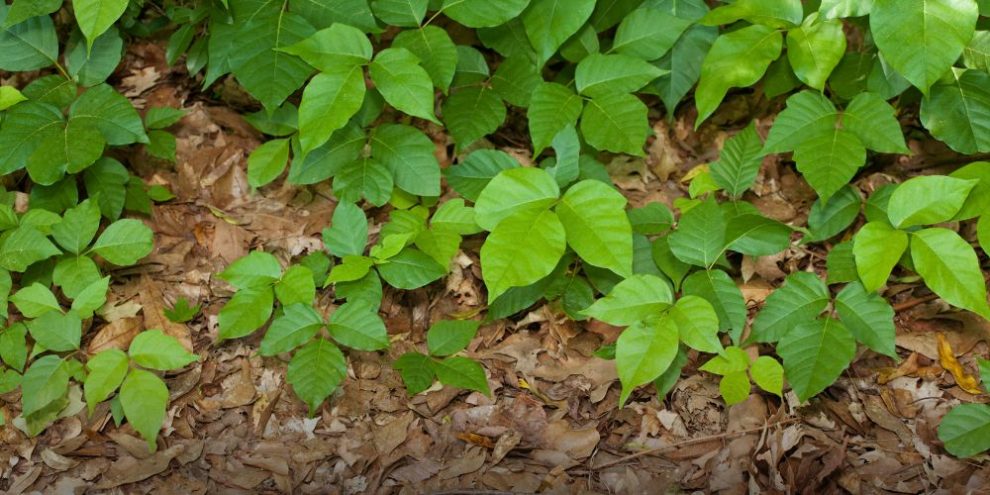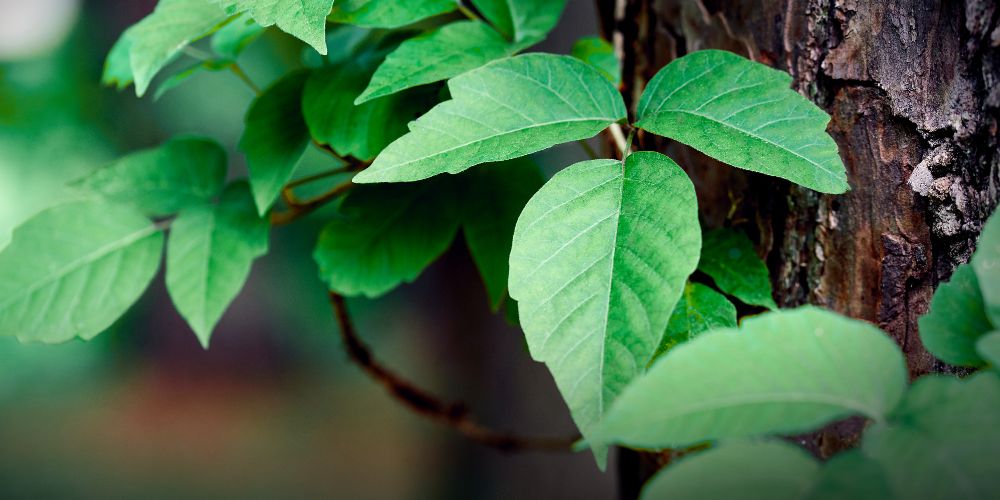
When it comes to poison ivy, there's a lot of misinformation floating around. Maybe it came from your camp counselor, a friend, or a well-meaning relative.
The problem?
Some of these myths can make exposure worse or lead you to underestimate how easily poison ivy can affect you.
Let’s set the record straight by digging into the most common poison ivy myths.
Barrie's News Delivered To Your Inbox
By submitting this form, you are consenting to receive marketing emails from: Central Ontario Broadcasting, 431 Huronia Rd, Barrie, Ontario, CA, https://www.cobroadcasting.com. You can revoke your consent to receive emails at any time by using the SafeUnsubscribe® link, found at the bottom of every email. Emails are serviced by Constant Contact
Myth #1: “If I touch it, I’ll get a rash right away.”
This one sounds logical, but it’s not how poison ivy works. People often think the rash pops up immediately after contact, which makes it easy to misidentify the source later on.
Fact
The rash is caused by an allergic reaction to urushiol, a sticky, colorless oil found in the leaves, stems, and roots of poison ivy, poison oak, and poison sumac.
It usually takes 12 to 48 hours for the rash to develop, depending on your sensitivity and the amount of urushiol you were exposed to. In some cases, it may even take several days.
Because of this delay, you might not connect the rash to your time outdoors. The best thing you can do is wash your skin with soap and cool water as soon as possible – ideally within 30 minutes of contact. Quick action can remove the oil and significantly reduce your chances of a reaction.
Myth #2: “Poison ivy rashes are contagious”
It’s a common belief that poison ivy spreads through scratching or from the fluid in the blisters. That idea makes people afraid of being near someone with the rash – but it’s not actually contagious.
Fact
The rash only appears where urushiol has touched the skin. You can’t spread it through scratching, touching the blisters, or being close to someone who has it. However, the oil can remain on clothes, gear, skin, pet fur, or tools for days (or even longer) if they’re not properly cleaned.
So while the rash itself won’t spread from person to person, you can re-expose yourself or others if urushiol is still present on a surface. That’s why it’s crucial to thoroughly wash anything that may have come in contact with the plant, including yourself.
Myth #3: “Animals can get poison ivy too.”
This one causes a lot of concern for pet owners. People often assume that if a dog or cat runs through a patch of poison ivy, they’ll end up with a rash too.
Fact
Most animals – especially dogs and cats – don’t react to urushiol the way humans do. Their fur acts as a natural barrier, protecting their skin from the oils.
That said, urushiol can cling to pet fur and easily transfer to your skin when you touch them. So, if your pet has been roaming in wooded or brushy areas, it’s a good idea to wipe them down with a damp cloth, take them for a swim or give them a bath to remove any lingering oil.
Pro Tip: Don’t forget to clean leashes, collars, and anything else that might have made contact with the plant.
Myth #4: “Dead plants are safe.”
You might think a dried-up vine or some old leaves aren’t a threat … but poison ivy doesn’t lose its potency when it dies.
Fact
Urushiol remains active for years, even on dried or dead plants. In fact, it can still cause a rash long after the plant has withered.
What’s worse, burning dead poison ivy can be extremely dangerous. The smoke can carry urushiol particles, and inhaling them can lead to a serious reaction in the lungs, throat, and nasal passages.
Never burn brush unless you’re absolutely certain it doesn’t contain poison ivy. And always handle yard waste with gloves and protective clothing … even if the plants look dead.
Myth #5: “I know what poison ivy looks like – I’d spot it.”

The phrase “leaves of three, let it be” is helpful, but it’s not foolproof. Poison ivy is a shape-shifter and can look very different depending on the season, region, and growth stage.
Fact
Poison ivy grows in clusters of three leaflets, but can come in many different forms.
The leaves can be shiny or dull, smooth or slightly notched, red, green, or even yellow (depending on the time of year). In spring, new leaves are often reddish and shiny. In summer, they turn green. In the fall, they can be red, orange, or yellow.
Poison ivy plants also grow to different heights. The most widely recognized poison ivy as ground cover but it can also grow as shrubs, and some variants climb trees as vines.
Because of this variety, many people misidentify it or overlook it completely. If you’re unsure, err on the side of caution and avoid touching unknown plants when hiking or doing yard work.
Myth #6: “Calamine lotion cures it.”
This myth is part of a broader misunderstanding: that there’s a quick cure for poison ivy. Unfortunately, once the reaction starts, you’re in for a few days (or even weeks) of discomfort.
Fact
There’s no actual cure for a poison ivy rash. Treatment is focused on easing symptoms like itching, swelling, and redness. Calamine lotion, hydrocortisone cream, and antihistamines like diphenhydramine (Benadryl) can help manage the symptoms. So can cool compresses and oatmeal baths.
For severe reactions, especially if the rash is widespread, on your face or genitals, or involves swelling of the eyes or difficulty breathing, – see a doctor. Oral corticosteroids may be necessary in serious cases.
Myth #7: “Gloves or long sleeves protect me completely.”
Protective clothing may seem like a foolproof defense – but it’s not the full story.
Fact
Long sleeves, pants, and gloves are a great first step, but urushiol can still stick to the surface of your clothing and shoes. If you touch contaminated clothing or gear afterward, especially if you haven’t washed it yet, you can transfer the oil to your skin.
Always wash outdoor clothing separately in hot water with detergent. Clean your shoes, tools, and gloves too. And be careful not to touch your face or other exposed skin while wearing potentially contaminated gear.
Myth #8: “You can build up immunity over time.”
You might have heard that repeated exposure can toughen you up against poison ivy. But the opposite is usually true.
Fact
Most people become more sensitive to urushiol over time … not less. While a few people may show no initial reaction, about 85% of the population is allergic to the oil, and sensitivity can increase with repeated exposure.
Some people even develop severe allergic reactions after years of mild ones.
Bottom line: don’t assume you’re immune just because you’ve never reacted before. It can sneak up on you.
Stick to the facts
Poison ivy is more than just an itchy inconvenience—it’s a plant that can cause real discomfort, lasting reactions, and even serious medical issues if not properly handled. The best way to avoid trouble? Learn the facts, treat exposure seriously, and always take precautions when you’re spending time outdoors.
Being able to separate myth from reality can make all the difference between a peaceful hike and a miserable week.











